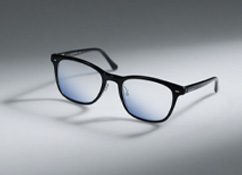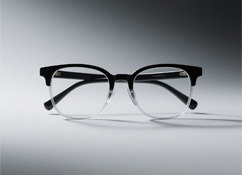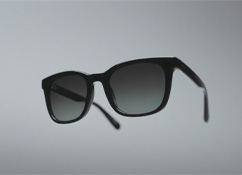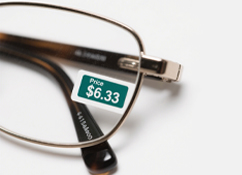As climate change pushes consumers and brands toward greener choices, the eyewear industry is stepping up—proving sustainability isn’t just a trend, but a smart, necessary shift. From frame materials to lens production, shipping, and recycling, every step of making glasses is getting an eco-makeover. Let’s explore the key trends driving the industry’s green revolution.
For decades, frames relied on resin and cellulose acetate—materials with high environmental costs. Today, brands are ditching fossil fuels for innovative, planet-friendly alternatives:
Plant-based plastics: Brands are using cotton, wood, or castor bean oil to create bio-based acetate, cutting down on petroleum-derived plastics. These materials biodegrade better and reduce carbon footprints.
Recycled metals & plastics: Old water bottles, aluminum cans, and even retired glasses are being melted down and reworked into sleek, durable frames. This keeps waste out of landfills and cuts mining demand.
By 2023, high-end brands launched full lines of recycled acetate and bio-based frames—each with unique textures and colors. Compared to traditional production, these processes slash carbon emissions by 50%—proving sustainability can coexist with style.
Making glasses used to mean excess energy, water, and waste. Now, brands are reengineering production to be lean and green:
Clean energy adoption: Solar panels power factories, while rainwater collection systems reduce reliance on municipal water.
Smart supply chains: AI and digital tools optimize raw material use, streamline production schedules, and speed up inventory turnover—cutting storage waste and lowering carbon from transportation.
Circular practices: Factories recycle scrap materials, reuse packaging, and digitize records to minimize paper waste. Old glasses are refurbished or melted down for new frames.
These moves don’t just help the planet—they build trust. 68% of shoppers say they’d pay more for eyewear from eco-conscious brands (per 2024 consumer surveys), making sustainability a win for both Earth and business.
Lens production has long generated waste—grinding dust, scrapped lenses, and fossil fuel-based raw materials. But breakthroughs are changing that:
Chemical recycling for lenses: In 2024, Mitsui Chemicals launched MR™ recycling tech, which transforms production dust and scrapped lenses into high-quality, clear lens materials. This closes the loop on waste.
Plant-based lens materials: Mitsui’s DoGreen™ line uses plant extracts to make high-refractive-index lenses (1.60 and 1.74). These lenses match petroleum-based versions in clarity, thinness, and durability—but cut greenhouse gas emissions by 14% (for MR-174™).
Third-party certifications: Lenses like MR-174™ and MR-160DG™ earn USDA and JORA certifications for their bio-based content, giving shoppers proof of sustainability.

While progress is clear, the industry faces hurdles: Eco-friendly materials cost 15–30% more upfront, and there’s no universal “sustainability standard” to guide brands. Even so, momentum is building.
As consumers demand transparency, more brands are sharing their eco-efforts—from carbon footprint data to material sourcing. Experts predict that by 2030, 50% of eyewear will use recycled or bio-based materials, driven by both consumer demand and stricter global environmental regulations.
A: Yes—many recycled metals and plant-based plastics are just as strong (if not stronger) than traditional materials. Brands test them for flexibility, scratch resistance, and longevity.
A: Look for third-party certifications (USDA bio-based, FSC for wood, or GRS for recycling). Reputable brands also publish sustainability reports detailing their processes.
A: No—innovations like Mitsui’s DoGreen™ lenses offer the same clarity, thinness, and UV protection as traditional lenses, with the added benefit of lower environmental impact.
Every pair of sustainable glasses you buy sends a message: Brands should prioritize the planet. From plant-based frames to recycled lenses, the eyewear industry’s green shift is proof that style and sustainability can go hand in hand. The future of glasses isn’t just clear—it’s green.











